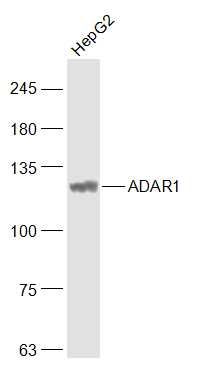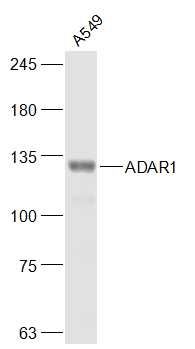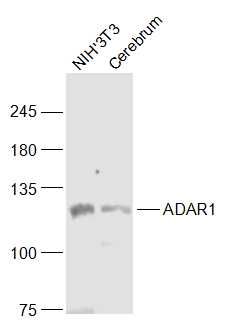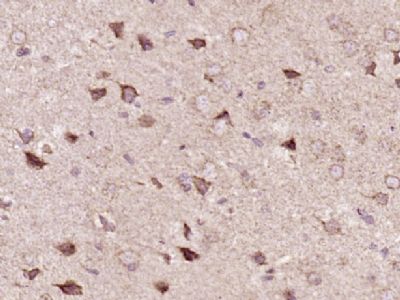Sample:
HepG2(Human) Cell Lysate at 30 ug
Primary: Anti-ADAR1 (SL2168R) at 1/1000 dilution
Secondary: IRDye800CW Goat Anti-Rabbit IgG at 1/20000 dilution
Predicted band size: 135 kD
Observed band size: 110 kD
Sample:
A549(Human) Cell Lysate at 30 ug
Primary: Anti-ADAR1 (SL2168R) at 1/1000 dilution
Secondary: IRDye800CW Goat Anti-Rabbit IgG at 1/20000 dilution
Predicted band size: 135 kD
Observed band size: 110 kD
Sample:
NIH/3T3(Mouse) Cell Lysate at 30 ug
Cerebrum (Mouse) Lysate at 40 ug
Primary: Anti-ADAR1 (SL2168R) at 1/1000 dilution
Secondary: IRDye800CW Goat Anti-Rabbit IgG at 1/20000 dilution
Predicted band size: 135 kD
Observed band size: 110 kD
Paraformaldehyde-fixed, paraffin embedded (Rat brain); Antigen retrieval by boiling in sodium citrate buffer (pH6.0) for 15min; Block endogenous peroxidase by 3% hydrogen peroxide for 20 minutes; Blocking buffer (normal goat serum) at 37°C for 30min; Antibody incubation with (ADAR1) Polyclonal Antibody, Unconjugated (SL2168R) at 1:400 overnight at 4°C, followed by a conjugated secondary antibody (sp-0023) for 20 minutes and DAB staining.
|



